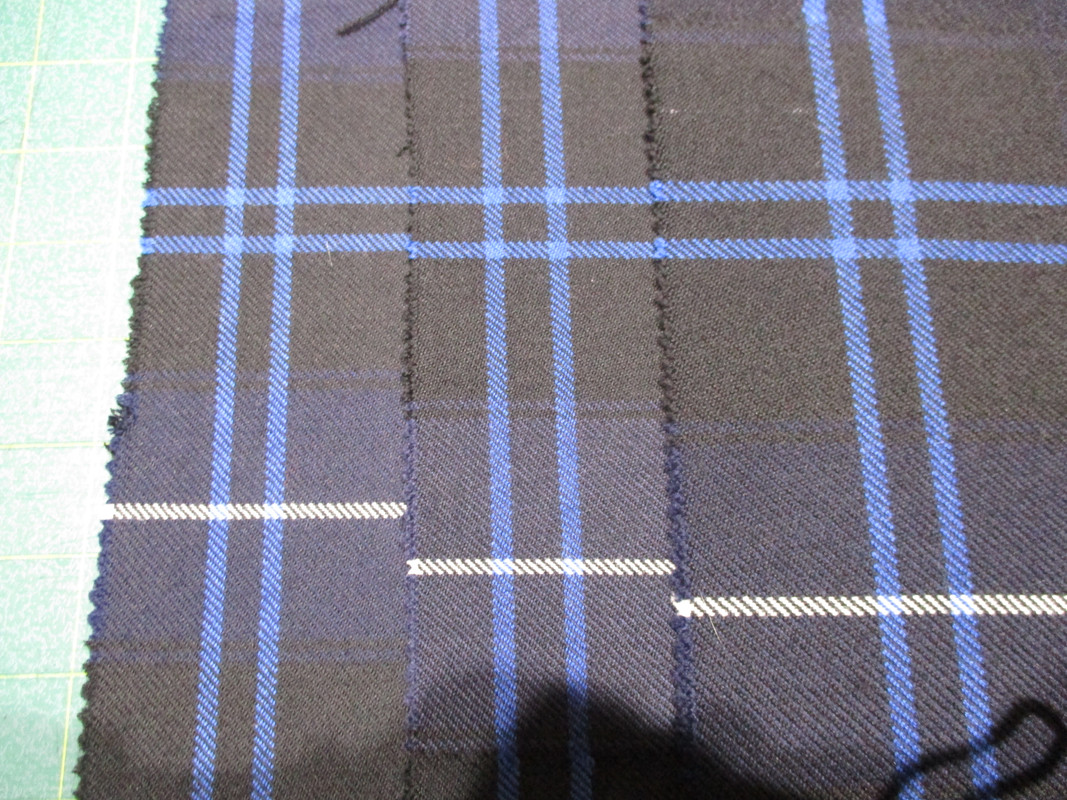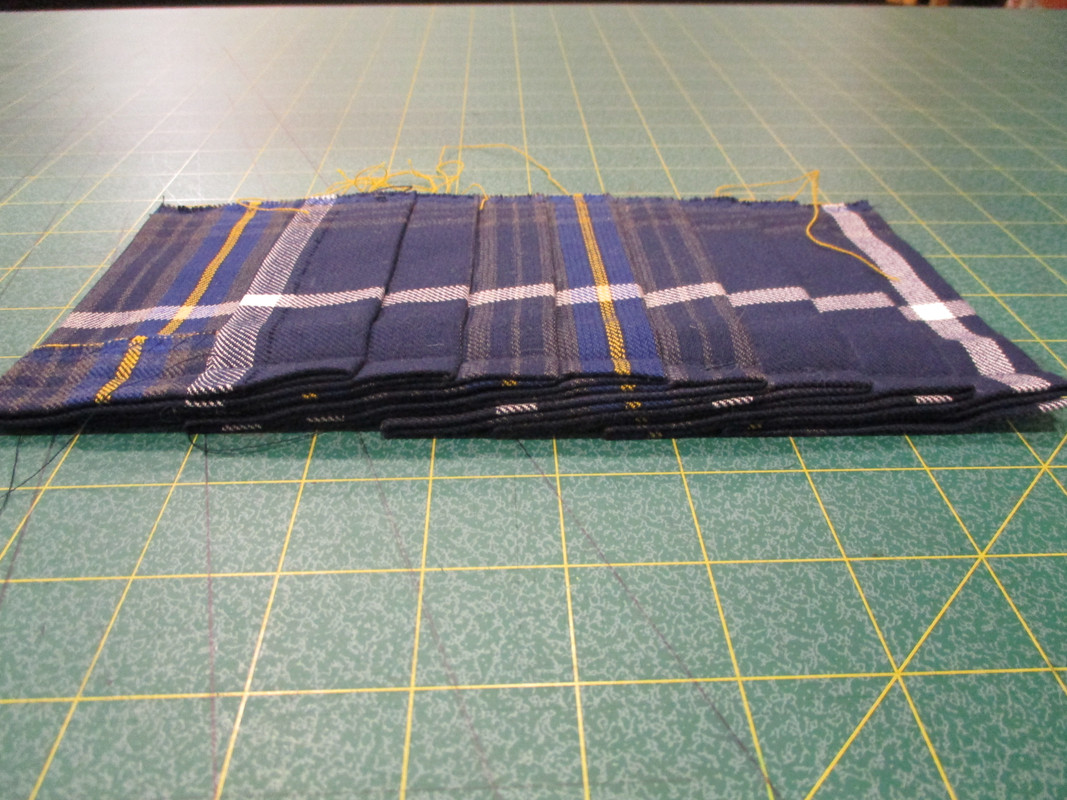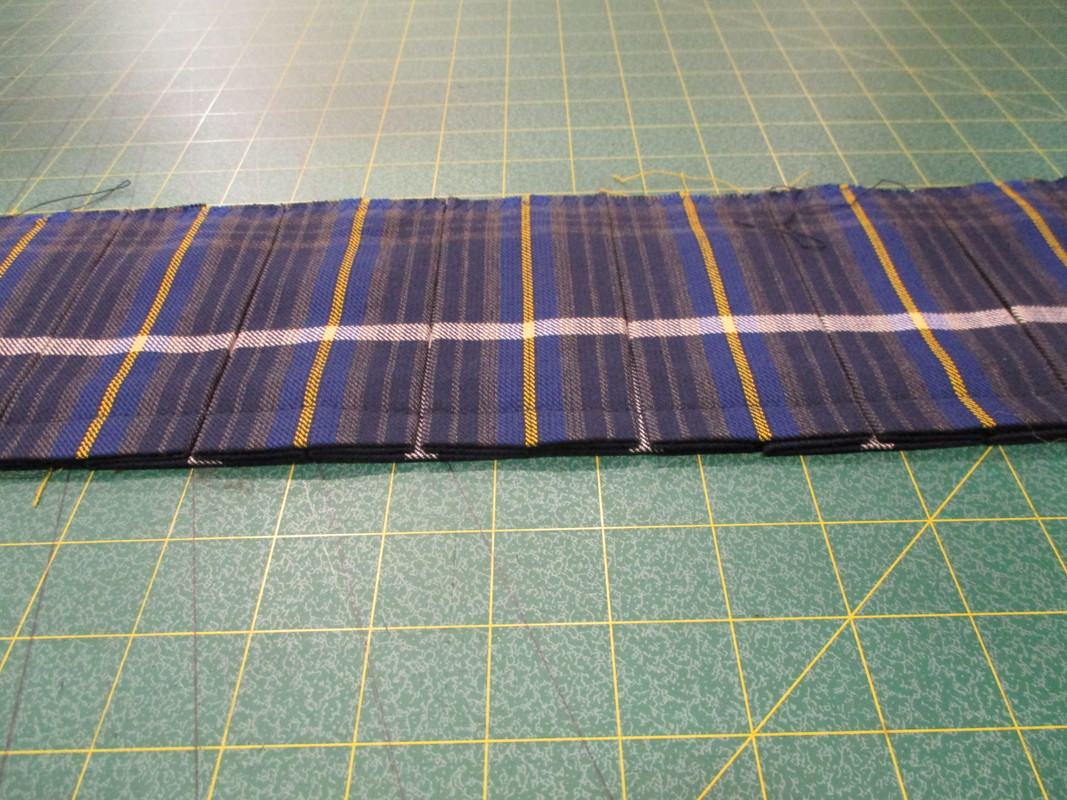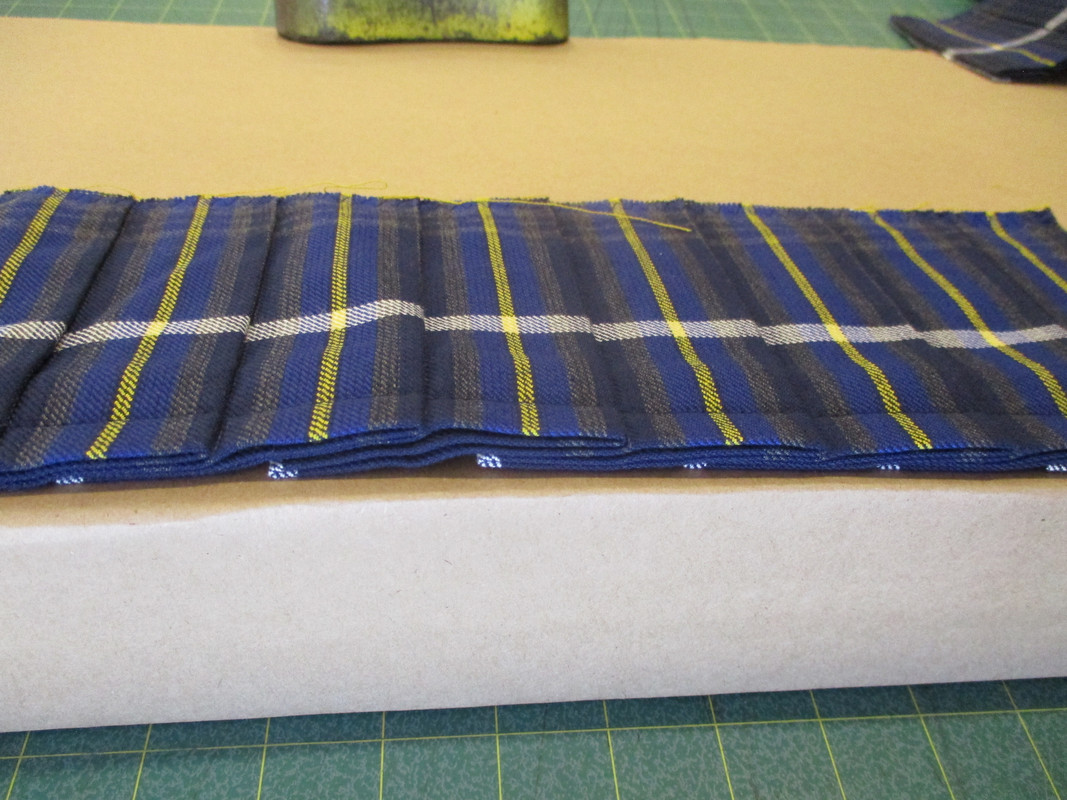|
-
10th March 21, 05:53 AM
#1
Yardage and weight of a kilt?
I now own 5 kilts, 6 if you count the one I'm planning to donate to a pipe band. Comparing my kilts, I now understand the difference between a top stitched and inside stitched, because my 2 wool kilts are inside stitched. I also understand the quality of true Scottish worsted wool. My acrylic kilts and PV kilt are top stitched. I was wondering, is there a good way to tell if a kilt is a 5 yard or 8 yard kilt, possibly by counting and measuring the widths of the pleats? Also, is there a good way to tell the difference between a light (10-11 oz), medium (12-13 oz) and heavy (15-16 oz) weight kilts?
I am pretty sure that both my wool kilts are light or medium weight, but I still plan to get a kilt in the MacPerson tartan, probably hunting. Both are heaver than my light-weigh suites made of Scottish worsted wool. By knowing what I have, I can more intelligently choose, when I lay down the money for a bespoken kilt in the tartan of my choice.
TIA!
Dave
-
-
10th March 21, 06:18 AM
#2
 Originally Posted by Crazy Dave

I was wondering, is there a good way to tell if a kilt is a 5 yard or 8 yard kilt, possibly by counting and measuring the widths of the pleats?
The simplest method is to run a tape along the length of the selvedge (bottom of the kilt). Quite often one finds that an 8 yard kilt has less material.
Also, is there a good way to tell the difference between a light (10-11 oz), medium (12-13 oz) and heavy (15-16 oz) weight kilts?
The best way is to get hold of a sample of each weight and feel the width/handle.
-
The Following 2 Users say 'Aye' to figheadair For This Useful Post:
-
10th March 21, 08:27 AM
#3
 Originally Posted by figheadair

The simplest method is to run a tape along the length of the selvedge (bottom of the kilt). Quite often one finds that an 8 yard kilt has less material.
Thank you for the reply. I am unclear about this method. Why would the 8 yard kilt have less material?
There is a kilt shop that is in Annapolis, MD that should have samples. I am considering them for my bespoken kilt, because I think it would come out better if the tailor is able to measure me directly.
-
-
10th March 21, 08:36 AM
#4
 Originally Posted by Crazy Dave

Thank you for the reply. I am unclear about this method. Why would the 8 yard kilt have less material? *snip*
The idea of "yards" is just a figure of speech to talk about how thoroughly pleated the kilt is. The waist, hips, and belly of each wearer will have a big influence on how much cloth is in the kilt once it is pleated to either sett or stripe.
The bottom line is that what is sold as a 'five yard kilt' has less and/or possibly shallower pleats than what is sold as an 'eight yard kilt'. It will end up being lighter in weight, and will likely have less 'swing' when you walk. If it is well made, few people will note the difference and if they do, they won't necessarily be sure what it is that causes the difference.
Similarly, a kilt with historical (not military) box pleats, probably pleated to the set will have somewhat less material in it because it takes less to make the pleats.
I have both an historical box pleat, and also an 8 yard knife pleat. I wear both happily, and the biggest difference is that the box pleat was cheaper, and swings less.
Rev'd Father Bill White: Retired Parish Priest & Elementary Headmaster. Lover of God, dogs, most people, joy, tradition, humour & clarity. Legion Padre, theologian, teacher, philosopher, linguist, encourager of hearts & souls & a firm believer in dignity, decency, & duty. A proud Canadian Sinclair.
-
The Following User Says 'Aye' to Father Bill For This Useful Post:
-
10th March 21, 09:07 AM
#5
 Originally Posted by figheadair

The simplest method is to run a tape along the length of the selvedge (bottom of the kilt). Quite often one finds that an 8 yard kilt has less material.
Thank you for the reply. I am unclear about this method. Why would the 8 yard kilt have less material?
There is a kilt shop that is in Annapolis, MD that should have samples. I am considering them for my bespoken kilt, because I think it would come out better if the tailor is able to measure me directly.
-
-
10th March 21, 09:15 AM
#6
 Originally Posted by Father Bill

The idea of "yards" is just a figure of speech to talk about how thoroughly pleated the kilt is. The waist, hips, and belly of each wearer will have a big influence on how much cloth is in the kilt once it is pleated to either sett or stripe.
The bottom line is that what is sold as a 'five yard kilt' has less and/or possibly shallower pleats than what is sold as an 'eight yard kilt'. It will end up being lighter in weight, and will likely have less 'swing' when you walk. If it is well made, few people will note the difference and if they do, they won't necessarily be sure what it is that causes the difference.
Similarly, a kilt with historical (not military) box pleats, probably pleated to the set will have somewhat less material in it because it takes less to make the pleats.
I have both an historical box pleat, and also an 8 yard knife pleat. I wear both happily, and the biggest difference is that the box pleat was cheaper, and swings less.
That makes it clear. I will give it another look/see. Thanks! I do like the look of box pleats.
-
-
10th March 21, 10:16 AM
#7
Let me try to illustrate using some very basic concepts.
Kilt fabric is sold as weighing a particular amount for a given yardage.
This yardage is usually expressed as ounces per linear yard at "double-width" or as the fabric is woven and sold to the kiltmaker.
A kiltmaker buys fabric double-width, cuts or rips it in half and joins the two halves. For example - to create an 8 yard kilt - a kiltmaker needs only to buy 4 yards of double-width fabric which is cut length wise. The result is an 8 yard long piece with a join in the middle.

If the fabric is listed as "16oz" it weighs 16 ounces or 1 pound for every linear yard @ double-width. So 4 yards of double-width fabric purchased by a kiltmaker will weigh 4 pounds.
But - There are 4 factors which will effect how much fabric will end up in a kilt.
1) The circumference of the customer's hips. The larger the customer is, the more fabric it will take to go around him.

2) The size of the Tartan pattern is called "The Sett". As each pleat will take up at least one repeat of the Tartan pattern, The larger the pattern is - the more fabric it will take to go around the person.

3) In general- the heavier the fabric - the larger the pattern will be in the woven fabric.

4) And finally how the fabric is folded into pleats. Here are two examples. Same fabric just folded differently.
When fabric is folded into Knife pleats there are many layers stacked up - This way of folding the fabric is what is referred to as an 8 yard kilt.

But when the fabric is folded into box pleats there are fewer layers stacked up - This way of folding the fabric is usually referred to as a 4 yard kilt.

We can also vary the width of each individual pleat. Wider pleats mean that fewer pleats will be needed to go around the butt. This is how a 5 yard kilt is made.

And these are just some of the many different factors that can effect just how much fabric is actually needed to make a kilt.
So, with these factors in mind here is a really rough, ballpark method, of determining the weight of the fabric that was used in a kilt.
With a tape measure, find the linear amount of fabric used, by measuring along the bottom edge in inches. Convert to yards to determine if you have an 8, a 5, or a 4 yard kilt.
Then measure the width of the fabric from the top of the waistbanding down to the bottom edge.
In inches.
Multiple the length by the width to determine the total square inches used.
One linear yard of double-width fabric will be 2160 square inches. (36" x 60" = 2160 sq. in)
Divide how many square inches are in your kilt by 2160. This will tell you how many double-width yards are in your kilt.
Let's say for example you measure and find your kilt has 8640 square inches. That is exactly 4 yards of double-width fabric.
Then put the kilt on a postal scale. If your kilt was made from 16oz fabric, your 4 yard double width fabric (8 yard kilt) kilt will weigh 4 pounds.
A full 8 yard kilt made from 13oz fabric will weigh 3.25 pounds.
A full 8 yard kilt made from 10oz fabric will weigh 2.5 pounds.
-
The Following 9 Users say 'Aye' to Steve Ashton For This Useful Post:
-
10th March 21, 01:57 PM
#8
Thanks, Steve! That is about as thorough an explanation as I can see possible. I should definitely be able to answer these questions with my new (to me) kilt.
Dave
-
-
10th March 21, 06:33 PM
#9
I concur with ^. Steve this is an outstanding explanation for new people. Could you make this a sticky?
-
The Following User Says 'Aye' to DCampbell16B For This Useful Post:
-
11th March 21, 09:54 AM
#10
When you hold the material in your hand, you will definitely notice the difference between light, medium, and heavy weight tartan. I have a kilt made of 11 oz fabric and one of 13 oz. It is surprising how much heavier the 13 oz feels than the 11 oz. I'm sure 16 or 18 oz material would be just as noticeably heavier than the 13 oz.
Consider the climate where you live. The more hot and humid the climate, the more I would suggest looking at lighter weight fabrics. The colder the climate, the more you'll want a heavier material wrapped around your body. Living in Florida and now South China, my lightweight kilt is wonderfully cool and practical. When I lived in Beijing, a heavier fabric was very welcome.
The general public will not notice the difference between a 5 or 8 yard kilt. But I can say that the way my 8-yard kilt hangs is far superior to my 5-yard one. The additional fabric and deeper pleats make for more swing and a more refined look overall. But the 5-yarder still looks very nice and I always get compliments on my kilt, no matter which one I am wearing.
Happy kilting!
Andrew
-
 Posting Permissions
Posting Permissions
- You may not post new threads
- You may not post replies
- You may not post attachments
- You may not edit your posts
-
Forum Rules
|
|




























Bookmarks